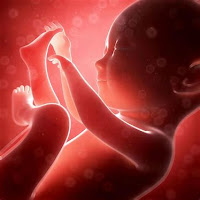Dependency: Here the pro-choice activist argues that a fetus is not fully human because they are totally dependent on another human being in order to live. But if that’s the criteria, you can ask about people with disabilities or elderly who are dependent upon others to live. Furthermore, newborns and toddlers are considered to be dependent on other human beings to live.
 Mr. Vogt likes to bring up the following scenario: Suppose two scuba divers are exploring and underwater cave, when the first diver’s oxygen tank fails. She can only survive if she gets air from the second diver’s tank, and let’s assume the second diver has enough oxygen for the both of them. The first diver is now completely dependent on the second diver. Does the second diver now have the right to pull out a knife and kill the first diver because of her dependency?
Mr. Vogt likes to bring up the following scenario: Suppose two scuba divers are exploring and underwater cave, when the first diver’s oxygen tank fails. She can only survive if she gets air from the second diver’s tank, and let’s assume the second diver has enough oxygen for the both of them. The first diver is now completely dependent on the second diver. Does the second diver now have the right to pull out a knife and kill the first diver because of her dependency?Thus, Dependency not a quality unique to the unborn that disqualifies it from being considered a human being. The Pro-choice bioethicist Peter Singer agrees. Writing in Practical Ethics, “[T]here is no doubt that from the first moments of its existence an embryo conceived from human sperm and eggs is a human being.”
In Christ, Ken.






















